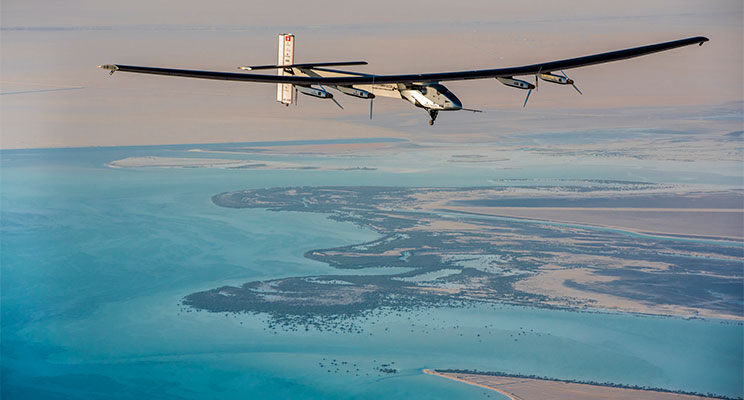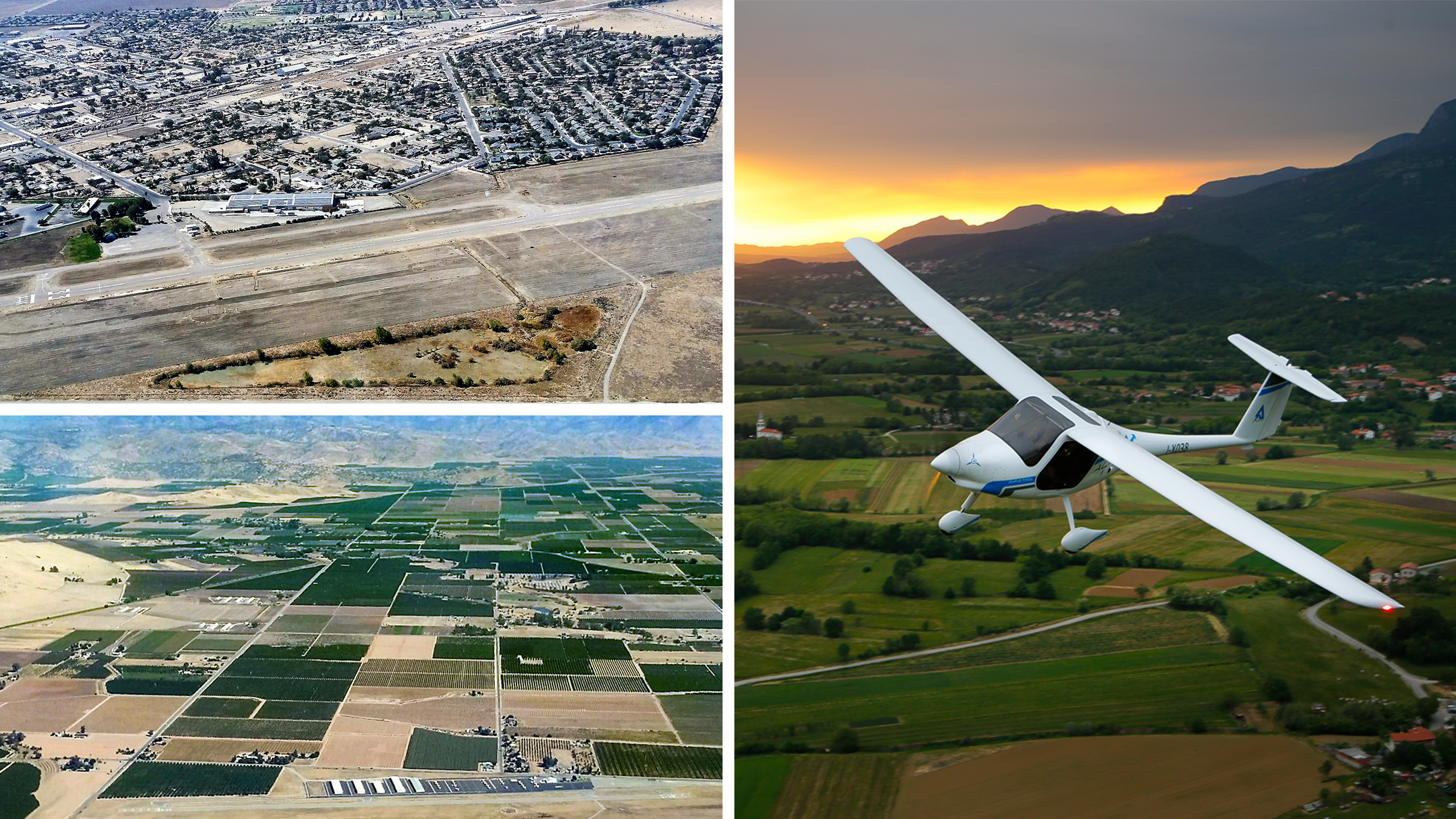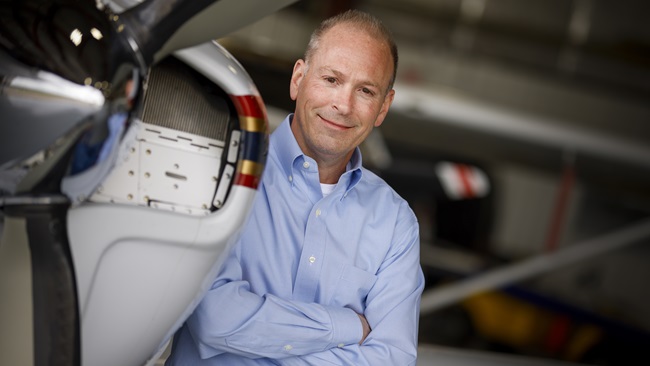Electric comes to life
We’ve heard for years, now, about electric aircraft, and watched the early development hampered by short range and limited flight time. And many must wonder, how practical will they really be? The answers have begun to take shape, in California and Colorado, along with Germany, not to mention circling around the world without a drop of fuel. Looking back on a busy year of new technologies and technological achievements, we’d be remiss not to also mention new tools behind the firewall that are designed to make flying safer for everyone, and jet packs, though you can’t have your own jet pack just yet.
 It was, in the best sense of the word, a stunt, a plan to get attention and prove a point. It took $170 million and years of planning, design, and testing—and a few months of delay while repairs were made in Hawaii—but Solar Impulse 2 proved its point. The solar-powered airplane made to fly for days on end completed the final leg of its journey in July, returning to Abu Dhabi, United Arab Emirates, more than a year after it departed on a journey around the world to promote renewable energy. AOPA Online followed the flights closely, and the Solar Impulse team also captured plenty of other media attention around the world as its journey progressed, all without a drop of fuel.
It was, in the best sense of the word, a stunt, a plan to get attention and prove a point. It took $170 million and years of planning, design, and testing—and a few months of delay while repairs were made in Hawaii—but Solar Impulse 2 proved its point. The solar-powered airplane made to fly for days on end completed the final leg of its journey in July, returning to Abu Dhabi, United Arab Emirates, more than a year after it departed on a journey around the world to promote renewable energy. AOPA Online followed the flights closely, and the Solar Impulse team also captured plenty of other media attention around the world as its journey progressed, all without a drop of fuel.
The same can be said for a brand-new entry in the electric aircraft world, produced by renowned creator of aerobatic masterpieces Walter Extra, who set a new world time-to-climb record for aircraft weighing 1,100 pounds (500 kilograms) to 2,200 pounds: 4 minutes 22 seconds to 9,842 feet (3,000 meters). Siemens, maker of the motor Extra used to set his record, enthused that the flight will “change aviation.”

A much less powerful but perhaps equally potent variety of electric airplane is made by Pipistrel in Slovenia, and soon to be found in a unique arrangement in California, where a public-private collaboration is working to create the first distributed network of electric aircraft charging stations in the world, and populate it with Pipistrels. This zero-emission flight training program could then extend beyond the traffic pattern, and organizers plan to extend invitations to veterans and youth for subsidized flight training that would trim the cost of a certificate further still.
In Colorado, Aero Electric Aircraft Corp. is hard at work testing its own all-electric trainer, the Sun Flyer. Reservations are being taken for that model, which the company said will have a three-hour endurance using a combination of solar cells and lithium batteries.
While much of the potential of electric aviation remains on the horizon, or over it, there’s a new fuel for combustion aircraft engines that can at least cut the lead out of the emissions menu. Swift Fuels has produced a lead-free fuel that is FAA-approved for engines that can operate on fuels with octane ratings of 80, 87, or 91. The company estimates 65 percent of the current piston fleet could run on its 94UL right now. Pilots will need to adapt when sumping the tanks, AOPA noted after a test. It comes out clear as moonshine with a “dank, musky odor,” AOPA Editor at Large Dave Hirschman reported after testing the new fuel in his experimental-category RV-3B.
Other new products announced in 2016 can be found on the other side of the firewall: AOPA teamed up with Garmin in July to bring sophisticated avionics to legacy aircraft through supplemental type certification, making less expensive, non-technical standard order systems available for installation in the certified fleet. The Garmin G5, first available in the experimental and homebuilt markets, was approved as a primary source for aircraft attitude or turn coordinator information, and a secondary source for altitude, airspeed, and vertical speed in a single instrument. The retail price was announced at $2,149, with an optional GPS antenna, if needed, for an additional $350, bringing the total price to $2,499. AOPA worked closely with the FAA and Garmin to highlight the need for this type of upgrade, which enhances both safety and reliability.
Others also took that ball and ran with it: On Nov. 28 came word that Trio Avionics is working with a new group to bring its non-technical standard order autopilot to the Cessna 172 and 182 fleets. A San Francisco IT executive and aircraft owner, Paul Odum has established a new company to develop the supplemental type certificates allowing Trio Pro Pilot installations in certified aircraft.
If you still have doubts that avionics can save pilots, the U.S. Air Force declassified cockpit video in September of an F-16 training flight that almost ended in disaster when the pilot blacked out. The automatic ground collision avoidance system (Auto-GCAS) took over and prevented an otherwise certain crash, and saved the pilot’s life. Word is that this technology may also make its way into civilian cockpits; GCAS has gained a loyal following among military pilots who have seen it in action, along with their families, and fellow pilots.
We promised you jet packs. Here you go.




